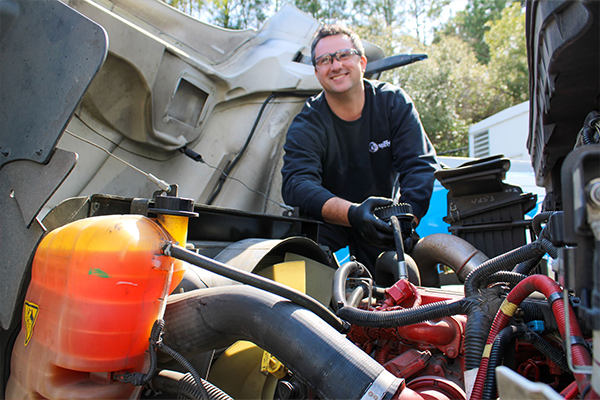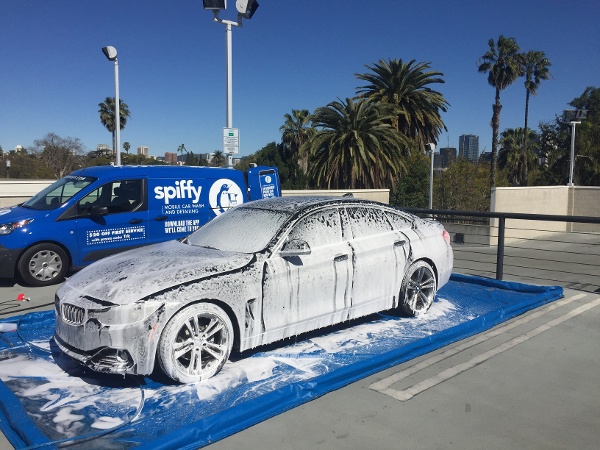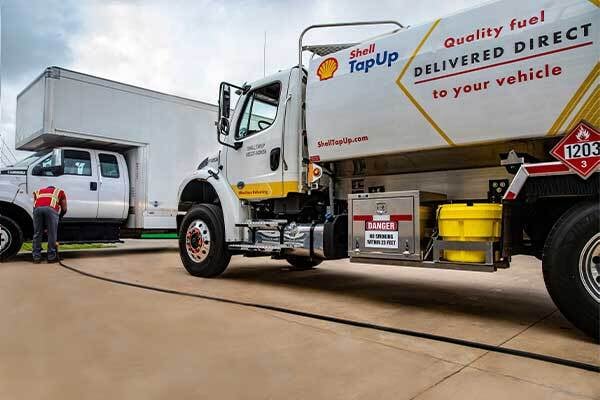With 2021 starting to wind down, it’s crucial to ensure that you’re setting yourself up for success in the new year. That’s especially important for fleet managers, who have been caught up in compounding waves of disruption caused by the COVID-19 pandemic.
Fortunately, we dove deep into this topic during our recent webinar: Winning Strategies to Drive Fleet ROI in 2022. SpiffyⓇ CEO Scot Wingo, and Daniel Arbour, Global Head at Shell TapUpⓇ, had plenty of ground to cover for the fleet managers in attendance.
Here are a few of the crucial pain points to consider as your fleet looks ahead to 2022 and beyond!
Navigating a tight labor market
One of the most significant pain points since March 2020 has been caused by the state of the workforce. You’ve likely heard about “The Great Resignation,” as workers deemed essential during the pandemic are quitting their jobs en masse. Most are fleeing poor working conditions and low wages; others are prioritizing their families and pursuing remote work opportunities.
Fleets are no exception, particularly those needing drivers with a commercial driver’s license (CDL). The lack of trained drivers results in shipping disruptions, which big names like FedEx and UPS cannot avoid. “With the supply pain problems going on, there [are] not enough drivers of 18 wheelers to move the containers that are coming aboard,” says Scot. “Now, if we look at our fleet [clients], because you have fewer drivers, [fleet managers] want to really optimize.”
For Daniel, the primary challenge for fleet managers exists outside of hiring. “If there’s a labor shortage, you need your labor to be more efficient in what they’re doing,” he says. “While we live in a world of multitasking and doing everything all at one time, what we’re actually observing is fleet owners want their drivers to focus on one task, to focus on their job. [...] Their job is not to go get new tires, not to do the oil change [or] clean the vehicle [or] go get fuel.”
As fleet managers remain flexible while managing their workforce and maximizing vehicle efficiency, it’s become easier to outsource pesky maintenance to mobile solutions. “We’ve seen an increase in requests from our fleet customers to do off-cycle services, like a second or third shift while the vehicles are at a hub,” adds Scot.

Committing to a sustainability focus
For many car buyers, sustainability has evolved from a secondary desire to a mainstream priority. According to a report from Accenture, “not only are 64% of the respondents sustainability-minded drivers, but most prefer that their next vehicle be a new-energy vehicle (NEV).” And momentum for NEVs - such as all-electric, plug-in hybrids, or fuel cell electric - exists beyond just the “sustainability-minded drivers,” as 53% of drivers surveyed would prefer non-ICE vehicles.
So, how does this growing consumer trend impact fleets? From Daniel’s experience at Shell TapUp, it starts with a greater awareness of carbon footprints and how managers can offset their impacts. “If you take [the average miles driven to re-fuel] into consideration, the mile reduction that we’ve been able to introduce represents about 1,775 tons of CO2 that we reduce as a result of reducing the miles on roads,” he says.
A massive energy transition can’t occur overnight. However, mobile services can help lay a foundation for minimizing miles driven and better optimizing labor hours. From there, the sky is the limit, as more companies begin investing in offsetting their carbon footprints and pursuing carbon-negative sustainability practices.

The state of the supply chain
Right now, the global economy continues to navigate supply chain issues. As Daniel puts it, this isn’t an issue that anyone is immune to: “We’ve had a huge uptick in demand for all the reasons we’ve said before. But right now, we’re feeling the same shortage that you’re probably feeling, [in terms of] getting new equipment out into the field,” he says. “It’s amplified for fleet owners. We understand that people are actually trying to maintain their fleets on an ongoing basis a little bit longer because they need to.”
As part of an industry reliant on semiconductors for new vehicles, fleet managers are struggling to add new cars, resulting in a need to extend the lifecycles of existing models. For companies with typically aggressive replenishment cycles, that means changing their entire maintenance plan to cater to vehicles with 60,000 or 70,000+ miles.

According to one of our live polls, only 9% of attendees said their maintenance strategy relied on company-employed mechanics. For Scot, that lines up with what he’s seen from the fleet side of our business: “Part of it is the cost for employing mechanics has gotten prohibitively high. The other thing we see is you have this really lumpy demand, where [on] Monday you’re slammed, and then you’re sitting idle for three other days a week,” he says.
As you can see, there were a plethora of great insights between Scot and Daniel in our recent webinar. The immediate takeaway among our attendees was hard to ignore: 91% rated their interest in mobile maintenance services (wash/detail, oil change, fuel delivery) for their fleet as “10 out of 10.”
Are you interested in learning more from Scot and Daniel? Check out the entire webinar to properly prepare your fleet for 2022 and beyond!





